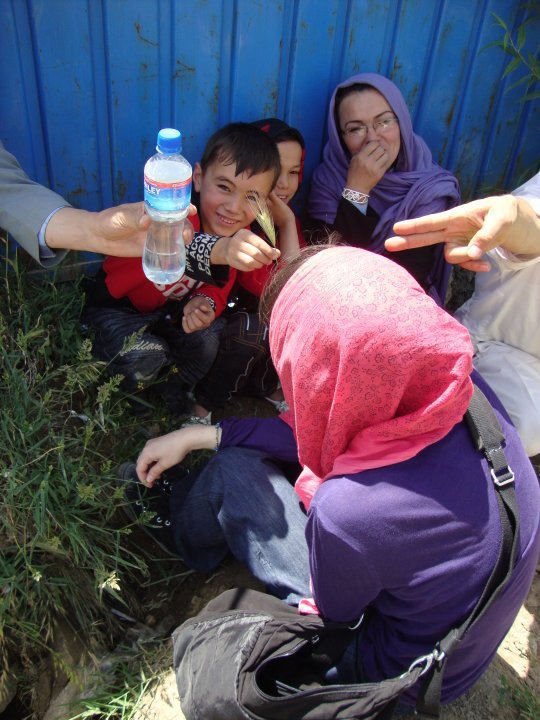

Afghanistan is more widely depicted as a land of scowling men toting Kalashnikovs, screaming foreign soldiers, burqa-clad women floating ghostlike alongside earthen compounds, unconscious opium addicts, and groups of hungry, unwashed children wandering desolate villages. These images capture hard realities deserving of acknowledgment and action, but Afghans increasingly see them perpetuating harmful stereotypes of a country that is, as a photographer friend of mine put it, “a Hell,” where the entire population has hit rock bottom and no one has anything left to lose. Afghan photographers understand this problem best. I frequently hear them bemoan the small sums they are paid for photographs of anything non-martial, and how positive pictures don’t sell. This needs to change.
The endless stream of grimly similar photographs from the wire services gives the impression of a static society where nothing ever changes and all endeavors for progress are futile. During my time in Afghanistan, I have posted hundreds of photographs to private facebook albums, and published some on my personal blog. My friends abroad have consistently remarked at how different the Afghanistan in my private albums is from the Afghanistan they see in their national newspapers and on television. Not always kinder, but different. I have had to point out the that, in most of my group shots, there are no foreigners, so unaccustomed are outsiders to seeing photos of Afghans smiling, cuddling their children, eating ice cream, hiking, working alongside the opposite sex, or otherwise engaged in mundane, universal activities.
Don’t get me wrong: violence and poverty are news, and should still be photographed, but photography from Afghanistan needs more complexity.
Because the aforementioned problems originate several levels above the individual –and often underpaid local– photographer, this aid worker offers a few suggestions to editors and bureau chiefs:
1. Burqa shots only when absolutely necessary. I’m serious. They don’t say anything new or interesting at this point. The web is flooded with them and they are automatically paired with almost every article written about Afghan women –even women who don’t wear the burqa. Where possible, send your photographers to take pictures of Afghan women with their faces uncovered and seek out photographs that show class, regional and occupational differences in women’s experiences and dress. A woman from rural Helmand, a woman from the Communist-era apartment blocks of Kabul, a Kuchi (nomad) woman, and a woman from a potato-farming village in Bamiyan all live very different lives.
2. Not all Afghan children are hungry and in need of a bath, even in poor rural areas. If you are going to publish photographs of children, give Afghan parents some credit and publish photos of happy, healthy kids, as well as scared, sickly ones.
3. More pictures of urban settings, please. The oft-repeated foreign correspondent’s axiom “Kabul is not Afghanistan” makes about as much sense as “Moscow is not Russia.” A majority of Afghans live in rural areas, but somewhere between 20 percent and 35 percent of the population is urban. Those lives matter, too, and writing them off as inauthentic is myopic and mean-spirited.
4. Request photographs that give context to gruesome, tragic events. Photos of dead bodies may churn stomachs, but they won’t make people think, not really, and they melt into the background of war gore at this point. Of the thousands of photographs of violence I’ve viewed in the past year alone, only Holly Pickett’s photo essay ‘Hospital on the Edge’ of Kandahar’s Mirwais Hospital stands out in my mind. Why? Because Pickett showed the dead, the dying, the loved ones left behind grieving, the bare conditions of the hospital itself and the struggle of its doctors and nurses to pull their patients back from the brink. Her photos not only unsettle, they also tell a story of real people with burning immediacy.
